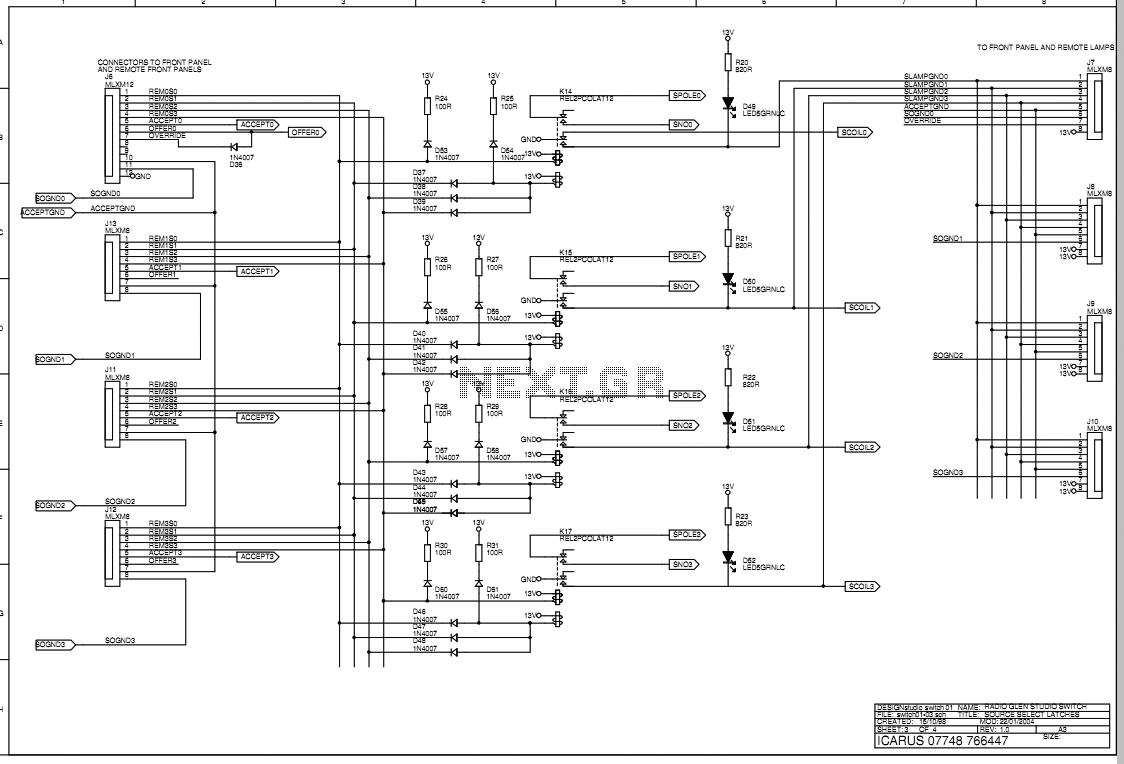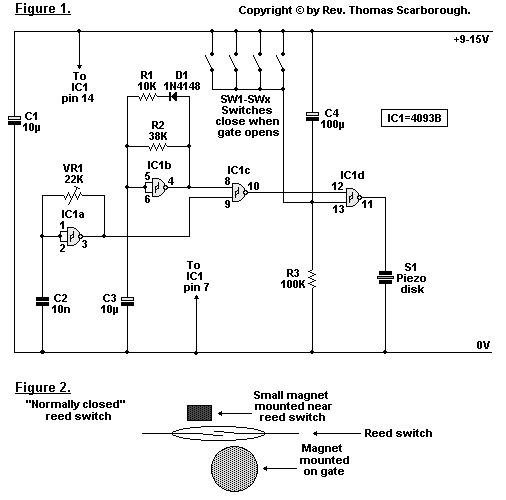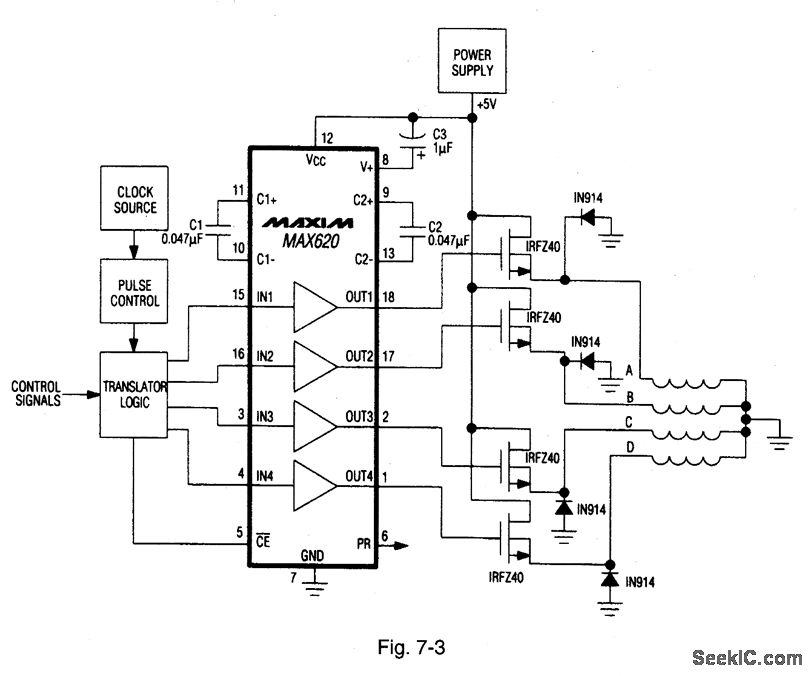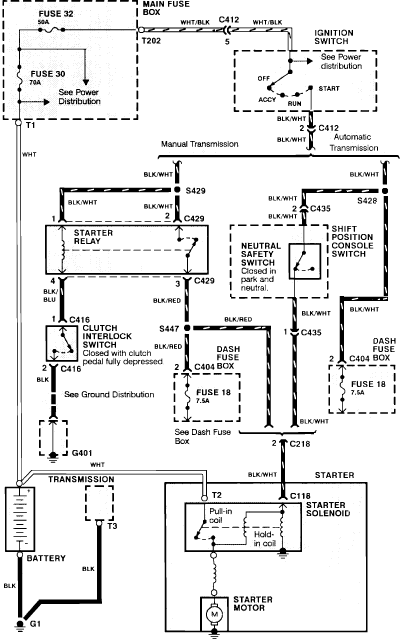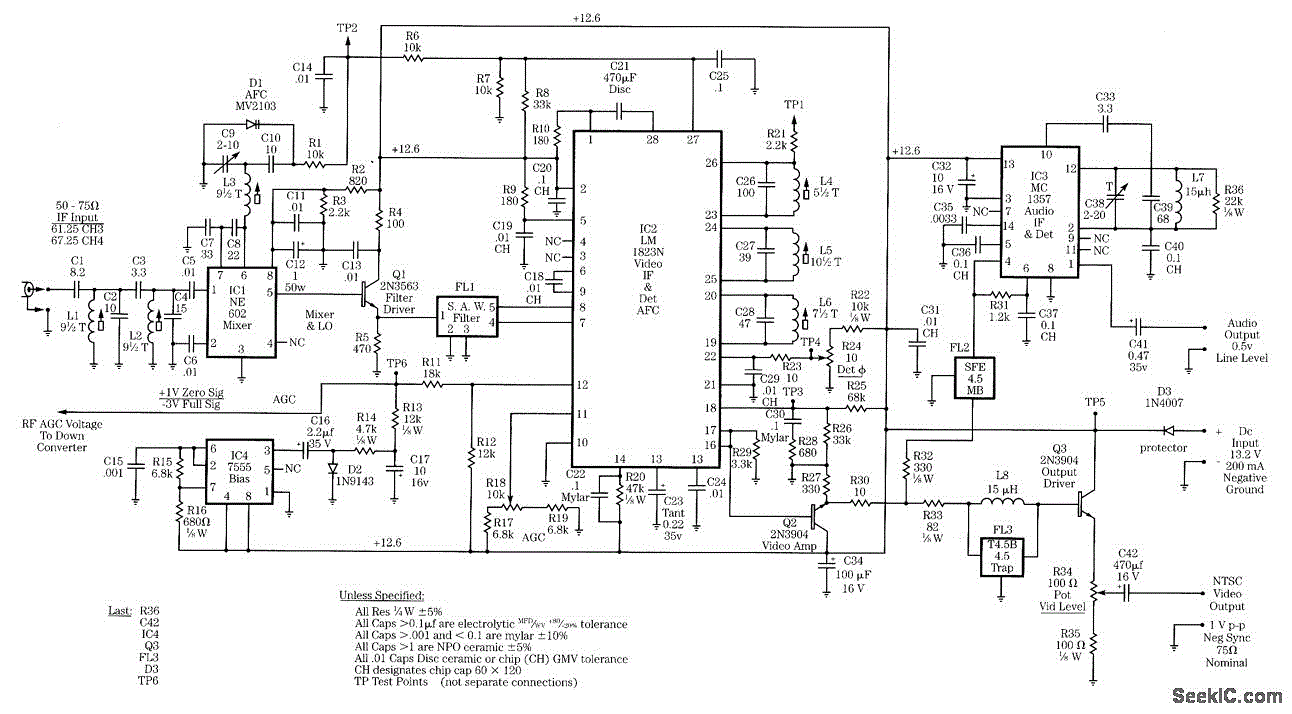
Home Security System

This alarm circuit activates when switches S1 through S5 are engaged. This action illuminates LED1 and triggers transistor Q1 through integrated circuits IC1C and IC1D. Relay RY1 is configured for self-latching. Switch S10 is utilized for resetting the circuit. When the key switch S1 is activated or when the re-entry buttons at S6 are pressed, IC1C is deactivated until the RC network composed of resistor R7 and capacitor C3 charges.
The described alarm circuit employs a series of switches (S1 to S5) that, when activated, initiate the alarm sequence. The activation of these switches sends a signal to LED1, which serves as a visual indicator of the alarm status. The signal is further processed by integrated circuits IC1C and IC1D, which control the operation of transistor Q1. This transistor acts as a switch to energize relay RY1, allowing it to latch and maintain the alarm state even after the initial activation signal is removed.
The self-latching feature of relay RY1 ensures that once the alarm is triggered, it remains active until a reset command is issued. This is accomplished through switch S10, which, when engaged, interrupts the current flow and resets the circuit to its initial state.
In scenarios where the key switch S1 is activated or the re-entry buttons S6 are pressed, the circuit design incorporates a delay mechanism through an RC network made up of resistor R7 and capacitor C3. This configuration temporarily deactivates IC1C, preventing immediate reactivation of the alarm. The time it takes for the capacitor C3 to charge through resistor R7 determines the delay period before the alarm can be re-engaged.
Overall, the alarm circuit is designed for reliability and user control, allowing for quick resets while preventing accidental reactivation during authorized re-entry situations. The combination of visual indicators, latching mechanisms, and delay circuits enhances the functionality and usability of the alarm system in various applications. This alarm circuit activates when SI through S5 are activated. This lights LED1 and activates Ql via IC1C and IC1D. RY 1 is wired to self latch. S10 is used to reset. When key switch SI is activated or when re-entry buttons at S6 are depressed, IC1C is deactivated until RC network R7/C3 charges. 🔗 External reference
The described alarm circuit employs a series of switches (S1 to S5) that, when activated, initiate the alarm sequence. The activation of these switches sends a signal to LED1, which serves as a visual indicator of the alarm status. The signal is further processed by integrated circuits IC1C and IC1D, which control the operation of transistor Q1. This transistor acts as a switch to energize relay RY1, allowing it to latch and maintain the alarm state even after the initial activation signal is removed.
The self-latching feature of relay RY1 ensures that once the alarm is triggered, it remains active until a reset command is issued. This is accomplished through switch S10, which, when engaged, interrupts the current flow and resets the circuit to its initial state.
In scenarios where the key switch S1 is activated or the re-entry buttons S6 are pressed, the circuit design incorporates a delay mechanism through an RC network made up of resistor R7 and capacitor C3. This configuration temporarily deactivates IC1C, preventing immediate reactivation of the alarm. The time it takes for the capacitor C3 to charge through resistor R7 determines the delay period before the alarm can be re-engaged.
Overall, the alarm circuit is designed for reliability and user control, allowing for quick resets while preventing accidental reactivation during authorized re-entry situations. The combination of visual indicators, latching mechanisms, and delay circuits enhances the functionality and usability of the alarm system in various applications. This alarm circuit activates when SI through S5 are activated. This lights LED1 and activates Ql via IC1C and IC1D. RY 1 is wired to self latch. S10 is used to reset. When key switch SI is activated or when re-entry buttons at S6 are depressed, IC1C is deactivated until RC network R7/C3 charges. 🔗 External reference
Warning: include(partials/cookie-banner.php): Failed to open stream: Permission denied in /var/www/html/nextgr/view-circuit.php on line 713
Warning: include(): Failed opening 'partials/cookie-banner.php' for inclusion (include_path='.:/usr/share/php') in /var/www/html/nextgr/view-circuit.php on line 713
